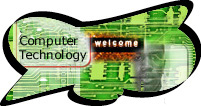
Topics:
- Web Design
- Web Graphics
- Formatting Web Documents
- Creating Hypertext Links
- PhotoShop
- Web Animation
- Flash
- Basics of Programming
- Variables, Expressions, and Statements
- Decision Making and Looping
- Strings
- Arrays
- Graphics
- File Handling
- Fundamental Algorithms
OAKLAND UNIFIED SCHOOL DISTRICT SKYLINE HIGH SCHOOL COURSE SYLLABUS: COMPUTER TECHNOLOGY 1 SCHOOL YEAR: 2015-16
Department: Computer Science and Technology Academy
Instructor: Mr. Frey
Website:www.voxcommunications.com
Grade Level(s) for which course is intended: 10
Credit Value: 5.00 Per Semester
Length of Course:1Year
Pre-requisite(s): none
Brief Course Description: This course provides students with a basic understanding of computer science, computer hardware, and applications software. Emphasis is given to the basic architecture and organization of computers, the basic operating system, descriptions of computer networks, and problem solving skills and strategies using computers. Students learn the use of applications software including word processing, databases, spreadsheets, graphics, Internet access, and web page development. Programming skills are introduced using a variety of software languages.
Learner Outcomes:
- Student will exhibit complex reasoning, decision making, and problem solving skills.
- Student will develop effective communications, both orally and in writing.
- Student will demonstrate ability to coordinate, manage or develop the work activities of a team.
- Students will understand systems and programming concepts related to Computer Science.
- Students are able to reason, communicate, solve problems and develop understanding of numbers, measurement, geometry, functions, statistics and probability, logic, and algebra.
Student Assessment: Since classes in Computer Technology, are by their nature project based and performance based driven, most of the student's work will be graded based on the quality of their projects. However, oral reports, written assignments, group projects, quizzes, tests, and a final examination will also be evaluated in calculating the student's final grade.
Marks:
A. Work that is outstanding: 90-100%
B. Work that is good: 80-89%
C. Work that is satisfactory: 70-79%
D. Work that needs major improvement: 60-69%
F. Work that is unacceptable: 59% and below
Classroom Management Plan Student can earn 100 Participation points per day. For being on time and in seat when the bell rings, student earns 25 points. For staying on task throughout the class, student earns 50 points. For cleaning up work area, logging out of the computer, and staying in seat until dismissal, a final 25 points.
Participation is worth 30% of the course grade. Projects count for 40%. Assessments count for 20% and the Interactive Journal counts for 10%. The full breakdown looks as follows:
Participation 30%
Projects 40%
Assessments 20%
Journal 10%
Late work will lose one full grade per day late.
- Be in your seat when the tardy bell rings.
- Listen carefully to instructions.
- No food or drink in the classroom.
- Keep your computer area clean and neat. Report any problems with your machine to me before the end of class.
- Log out of your computer and tuck your chair in before leaving.
- Cheating on tests or plagiarizing written assignments will result in flunking the assignment, a parent-teacher conference, and disciplinary actions as per the Honor Code of the Skyline Student Handbook.
- Use Electronic devices only when given permission to do so.
Behavior Issues: The Countdown of Actions
If a student is violating classroom rules, the following steps will be taken in this order:- Verbal warning.
- One-on-one discussion.
- Call home.
- Meeting with parent/guardian at school.
- Disciplinary action with school administrators with possible suspension.